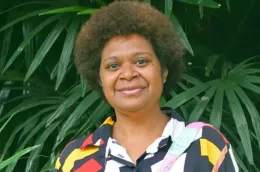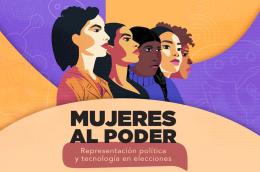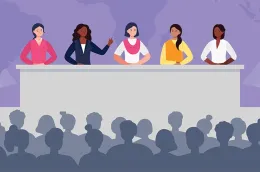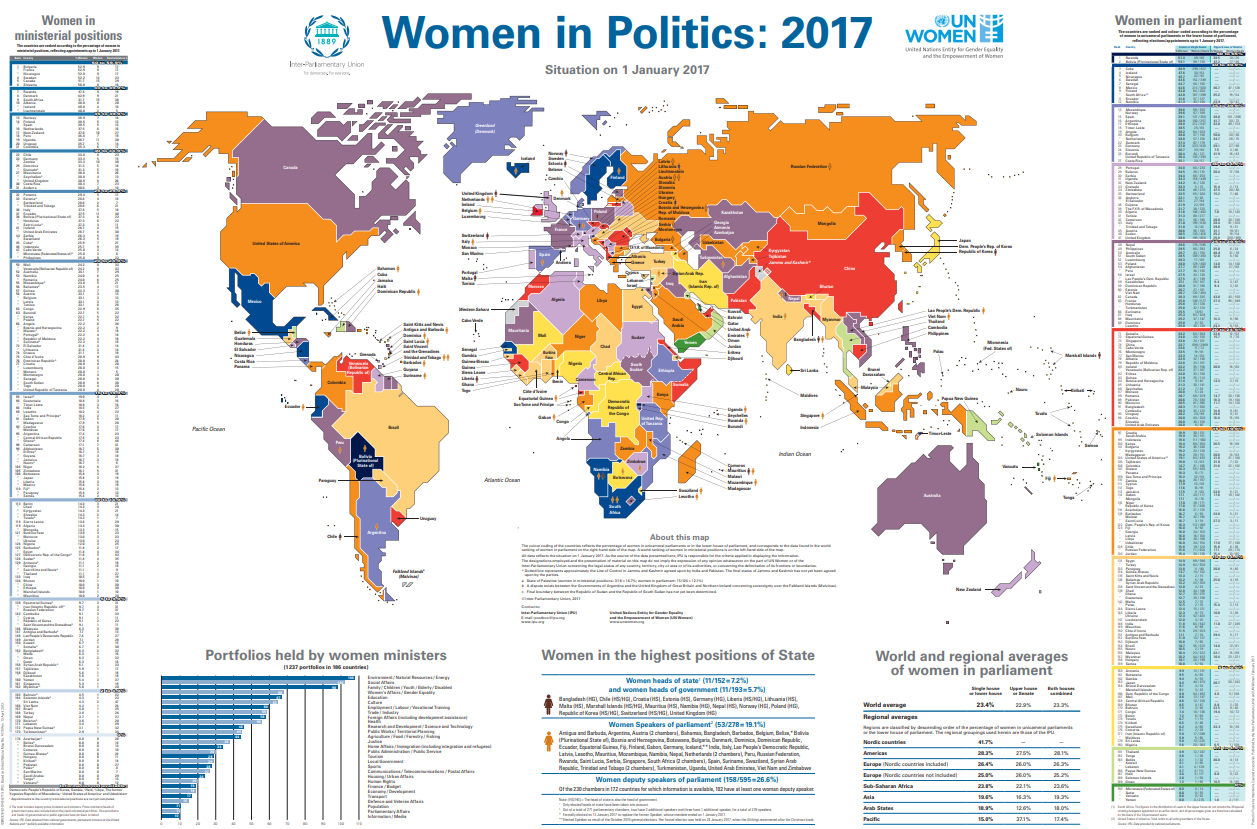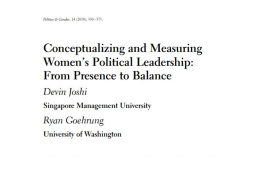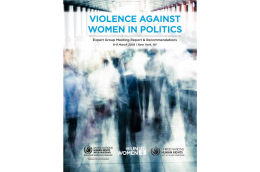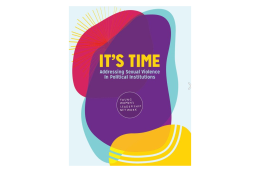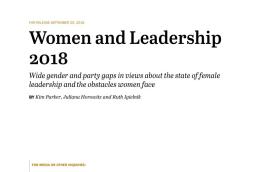Women's Leadership
Main navigation
Here we are in another presidential election year. (Pause for scream.) Chaos will surely abound on the campaign trail and elsewhere, but we here at Cosmo have found a way to not only survive elections but to use them to feel tangibly better about the world: Focus on the women.
A few elections ago, this took the form of our award-winning guide telling women exactly How to Run for Office. It felt urgent—at the time, only 8 percent of women told us they’d even consider running for office. Fast-forward seven years and nearly one-third of our state legislature seats are held by women. Twenty-eight percent of elected officials in Congress are women (compared to 19 percent 10 years ago). And we have our first-ever woman Vice President.
Now there’s a new urgency: While more women are gaining elected positions, they’re facing frustrating—and frustratingly gendered—obstacles once they’re on the job. So we’ve decided to publish a new guide about how to succeed in office once you get there.
It’s perhaps no surprise that for elected women, success requires the support of other women. Take it from our partner on the project, Pivotal Ventures, an investment and philanthropic company founded by Melinda French Gates to put $1 billion toward expanding women’s power and influence in the U.S. I caught up with Melinda—or “MFG” as her colleagues fondly call her and now so do I—this spring, right before Election Year 2024 really went into overdrive, to talk about our shared passion for helping all women thrive.
Read here the full article published by Cosmopolitan on 16 May 2024.
Image by Cosmopolitan
.
There are calls for more support for Pacific women to get into politics, while also recognising cultural leadership roles.
Pacific Island Forum Secretariat policy advisor on gender equality Dr Fiona Hukula says Pacific women have to balance expectations that can contradict each other.
“We live and fend in a world where we are also tied to some of our cultural and social obligations, and it in many ways influences the way we think about gender relations, the way we think about leadership.”
In the Pacific region, just 8.8 per cent of MPs are women. In the Marshall Islands, Hilda Heine is the first woman to become president, and the first woman president of any Micronesian country.
Speaking to William Terite on Pacific Mornings, Hukula says the low representation of women in parliament is a longstanding concern.
“We know that our region has some of the highest rates of violence in the world and the lowest rates of women’s political representation, but to be fair, there’s been a lot of work in trying to ensure that women take up leadership roles.”
Louisa Wall is a former Labour cabinet minister, and was the Ambassador for Gender Equality in the Pacific until March when her role was scrapped by the coalition government.
Read here the full article published by the Pacific Media Network News on 14 May 2024.
Image by the Pacific Media Network News
.
Why is it important to have more diverse women in spaces of power for democracy in Latin America? How does misinformation and online gender violence operate against them now that they are conquering political spaces? How is artificial intelligence beginning to play a role in the political participation efforts by women and underrepresented groups? These and other questions will be up for discussion this Tuesday in Mexico at the forum ‘Mujeres al poder, representación política y tecnología en elecciones (Women in power, political representation and technology during elections), organized by EL PAÍS América and Luminate, the alliance behind the Women Leaders of Latin America project. The event will feature numerous women with a public voice.
With less than a month to go before a national election in Mexico, where there are two women candidates with a strong chance of winning, the debate becomes increasingly relevant, and even more so because the forum is organized around solutions and an exploration of the challenges and difficulties faced by women who reach positions of power. One of the guest speakers who will discuss online gender violence is Salma Luévano, Mexico’s first trans lawmaker, who has suffered it firsthand; other Mexican speakers include Senator Beatriz Paredes of the PRI party, the politician and feminist Martha Tagle; and Rita Bell López, Advisor for the National Electoral Institute (INE).
Read here the full article published by El País on 14 May 2024.
Image by El País
.
Progress towards legal gender equality has stalled in many parts of the world. The data published earlier this year by Women, Business, and the Law report reveals that women, on average, have less than two-thirds of the legal protections that men have, down from a previous estimate of just over three-quarters. This stark reality is a sobering reminder of the challenges that still lie ahead.
For example, the absence of legislation prohibiting sexual harassment in public spaces, such as mass transit, hampers women's ability to access employment opportunities and fully participate in the workforce. The lack of services and financing for parents with young children places a disproportionate burden on women. Furthermore, the effectiveness of gender-sensitive legislation is often undermined by inadequate enforcement mechanisms. In many regions, women's limited political clout fuels a self-perpetuating cycle of restricted legal rights and reduced economic empowerment.
Recognizing the importance of women's representation in political leadership, the World Bank, represented by the Women Business and the Law (WBL) report, Women Political Leaders (WPL), and the Oliver Wyman Forum (OWF), have joined forces to address the challenges faced by women in political leadership positions. Our collaborative efforts under the Representation Matters program aim to foster women’s participation in decision-making positions, and to promote legal equality and economic opportunities not only for women, but for everyone.
The initiative comes at a critical time. Achieving equal opportunity is not only a fundamental human right for half of the world's population; it is also an opportunity to drive faster economic growth, fostering prosperity for all.
Read here the full article published by The World Bank on 14 May on 2024.
Image by The World Bank
.
Say you’ve just scored your dream job. And that dream job involves representing your town, county, state, or even country, dedicating your time and energy to making a difference in people’s lives. You’re feeling energized, hopeful, idealistic even. And then, on day one, you face a harsh reality: The majority of governments in this country weren’t set up with women in mind. You knew your job would be tough, but maybe you didn’t realize how tough.
It’s a previously underreported scenario we heard again and again while talking to elected women for How to Succeed in Office. They face far more roadblocks than their male counterparts on all fronts—financial, logistical, physical, mental, emotional, we could go on—with women of color and working parents often being even more affected.
Below are ideas and tangible solutions for the biggest and most common challenges women in office face. We also enlisted veteran politicians to help out a few newcomers with their very specific quandaries. Because we know it takes a village, and we’re pretty sure it’s women who are going to get each other out of this mess.
Read here the full article published by Cosmopolitan on 13 May 2024.
Image by Cosmopolitan
.
Can a democracy where women have never been equal ever really thrive? How are attacks on democracy tied to gender equity? What can we learn from past fights to protect and expand women’s rights in order to chart a path forward?
A two-part virtual discussion hosted by Ms. magazine in partnership with NYU Law’s Birnbaum Women’s Leadership Center and the 92Y explored these questions, plus how women’s rights are inextricably tied to the integrity and durability of democratic institutions.
The conversation was moderated by Jennifer Weiss-Wolf, executive director of the Birnbaum Women’s Leadership Center at NYU Law and executive director of partnerships and strategy at Ms. magazine, with panelists:
1. Alexis McGill-Johnson: president and CEO of Planned Parenthood Action Fund
2. Melissa Murray: Frederick I. and Grace Stokes professor of law and faculty director of the Birnbaum Women’s Leadership Center at NYU Law
3. Pamela Shifman: president of the Democracy Alliance
Watch here the full recording published by Ms. Magazine on 02 May 2024.
Image by Ms. Magazine
.

